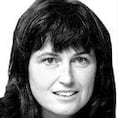What constitutes a hero? History tends to present soldiers and explorers, individuals who defeated the enemy in battle, or survived the challenges of a jungle, or spent 70 foodless days at sea aboard a tiny raft. All very heroic, but my idea of a true hero is closer to J.S. Bach, Marie Curie or David Attenborough.
Attenborough is an interesting character, a consummate television professional who makes no claims at being a scientist, but has opened the riches of the natural world to millions. Investigating the natural sciences at any level, in the field, requires patience, humility and endurance, whether you are observing herons or tigers. As with the local historian or amateur archaeologist, the gentleman or gentlewoman naturalist has often contributed valuable findings to be used by their professional counterparts.
Ireland has a fine tradition in quality field work pursued by non-professionals with an abiding passion for their subject. Geology, botany and biology were central to the Victorian mind, as was an interest in antiquities and archaeology. Robert Lloyd Praeger personified this throughout his long life. He trained as a civil engineer, but developed his interest in botany through his boyhood experience of the Belfast Naturalists' Field Club which he joined when he was 11.
Praeger, through his writings and his work with the Clare Island Survey, is a seminal figure. But there are many others, less celebrated but still remarkable, such as Cynthia Longfield (1896-1991), the third daughter of an Anglo-Irish family from the village of Cloyne in East Cork.
Although she never attended university, she became a gifted entomologist and ultimately an international authority on the Odonata - damselflies and dragonflies. She travelled widely at a time when most young single ladies did not; in 1924 she sailed as a member of the St George Scientific Expedition to the Pacific. Her study Dragonflies of the British Isles (1937) proved significant.
While Longfield was bound by the conventions of her class, she at least enjoyed privilege and financial advantages. Another outstanding Irish self-taught female natural scientist, Maude Jane Delap, had none. Not did she ever travel beyond Ireland.
This Wednesday marks the 50th anniversary of her death on July 21st, 1953 - the same year as Praeger, her almost exact contemporary. The seventh of 10 children, she was born on December 7th, 1966 in Templecrone, Co Donegal, where her father, Rev Alexander Delap, was rector. He was also an enthusiastic naturalist.
When he was appointed rector of Cahirciveen and Valentia, he despatched his family by road to Co Kerry, and sailed his boat loaded with the family's belongings down south.
Maude Jane, then eight years of age, and her sister Constance, were to benefit from life on Valentia. Both became particularly interested in marine biology. Maude Jane would have a sea anemone, Edwardsia delapiae, named after her and in 1936 was elected an associate of the Linnean Society. Years before that, in the 1890s, a group of British naturalists, led by Edward T. Browne of University College London, selected Valentia and its marine fauna for a study project. Some 188 pages of scientific papers were published in 1899 and presented to The Royal Irish Academy. Maude Jane and Constance were acknowledged.
Browne encouraged Maude Jane's interest in marine biology. She became devoted to him. Sadly, her love was not returned: he married one of his colleagues and returned to Britain. But they remained friends for more than 40 years until his death in 1937. For his birthday each year she sent him a box of violets.
Between 1899 and 1905, the Delap sisters published two papers on the Valentia harbour plankton. Maude Jane also successfully reared jellyfish in a bell jar. She was a tough, kindly candid character, very thrifty, and able to handle a boat. As Nellie O'Cleirigh records in Valentia: A Different Irish Island, the Delap sisters helped to save the hay. They also often tended ill and dying fishermen.
In 1906, Maude Jane was offered a job in the marine biological station in Plymouth. By then, she was 40 and may have felt she was too old to take up such a challenge. There was also the opposition of her domineering father, who insisted none of his daughters could leave home unless for marriage. Maude Jane, Constance and another unmarried sister, Mary, had their fates decided for them.
Rev Delap died that same year. His widow and the three spinster daughters had to vacate the rectory and were granted the use of "Reenellen", a large house overlooking the sea. On a recent abortive trip to Skellig Michael I visited what must once have been a beautiful house. Pink hydrangea and leggy hebe have overrun it and the windows are boarded up.
Maude Jane Delap was the last surviving member of the household. Her quietly heroic life is honoured in Valentia's wonderful local history museum. Still collecting specimens at 83, she left an extensive specimen collection, dominated by jellyfish. But near the end it became impossible to her to renew the formalin solution they were preserved in. It evaporated, reducing a splendid collection to little more than sludge-filled jars and bottles. After her death at the age of 87, the collection was dumped in the garden. She never left Valentia and is buried there.
